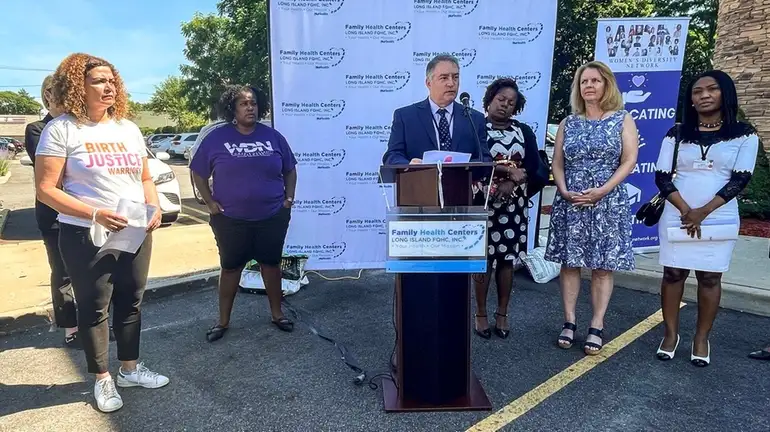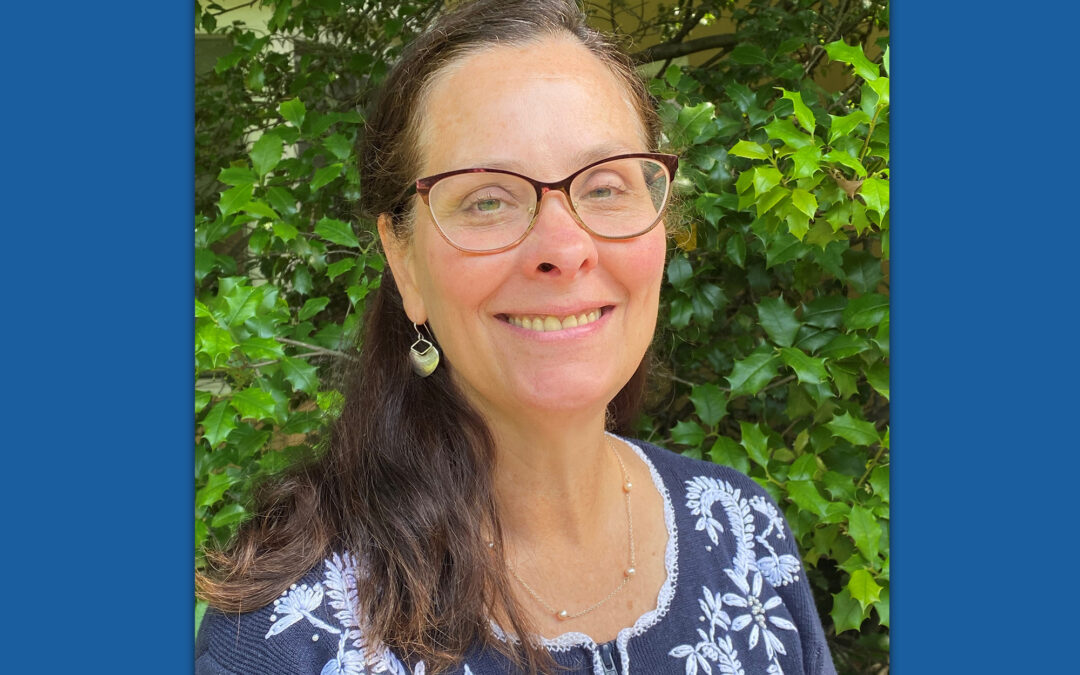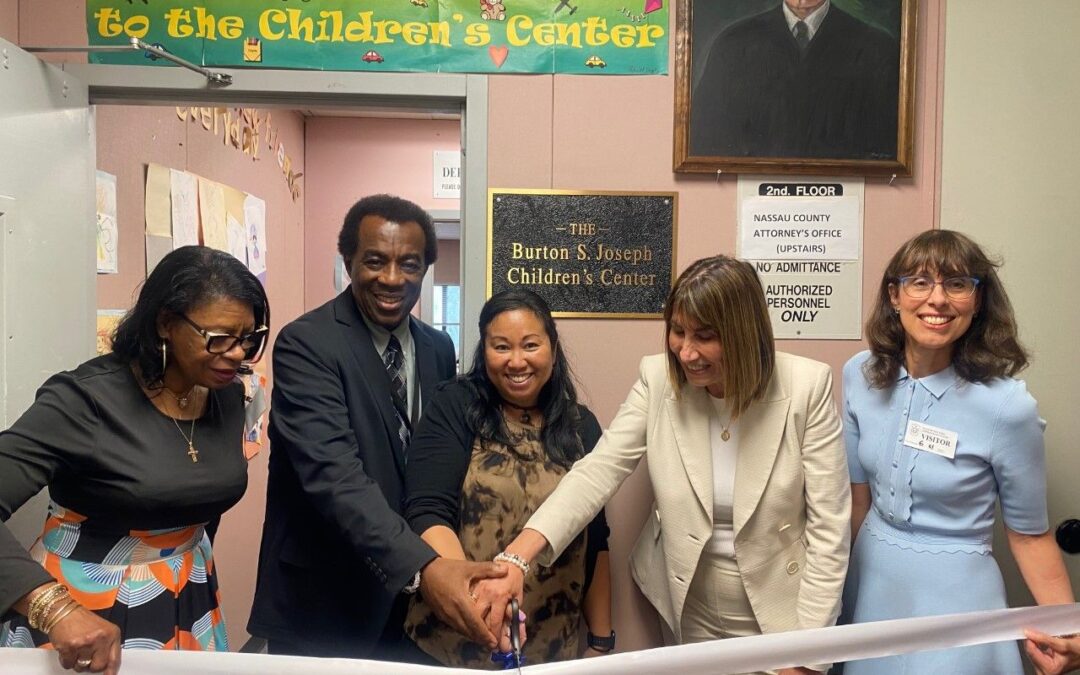
by North Shore Child & Family Guidance Center | Jul 11, 2022 | Blog
Interview with Marisa Padgett, LCSW, conducted by Alex Levitt
“These kids are trying to live a life that is authentic to what is going on inside of them, and when loved ones reject them, that is detrimental to the kid’s mental health and self-esteem.”


In what ways do you see changes when it comes to acceptance of LGBTQ+ youth in society?
Marisa Padgett: It’s interesting because I recently talked to a 12-year-old boy here who identified as gay. I was speaking with the grandmother, and she was worried at how society at large will accept him. While she accepts him, she has her fears. We were talking about how acceptance has changed a lot in the last 10 to 20 years. I remember that when I was in high school, most people were not out. It was getting more accepted, but not how it is now.
I don’t worry as much about the kids with their peers, but more when they are out in the community. I think it has gotten better, but there is still a long way to go. In some ways, now it is more divisive than ever. I think that people are very hard-lined where they stand, either one way or another. While the LGBTQ+ community is growing, and we have things in place for pride and a lot of support for the kids in this community, there are people out there who are rejecting and intolerant, and they skew toward hate just for hate’s sake.
Middle school kids can also be very vocal and put down kids for any reason because that’s kind of where they are in life, developmentally. Also, generational issues surface a lot – for example, “My mom gets me, but she says don’t tell my grandparents that I’m transgender.” There is still a lag generationally. There can also be a shift in a relationship between a kid and loved ones after coming out. When the reality of it hits the parents, some have a hard time reconciling this new information about their kid’s identity.
How can we build an atmosphere of inclusion, regardless of our personal or religious views?
MP: We tell families that when a child comes out, this is who they are; they are not different people. What you think about a person before you found out they are gay, transgender or non-binary is still true because they are still that same person. There are many layers to people. Recognizing this is important for the families and for the society at large in becoming more tolerant. Look at people as people who are living their lives and their identity, and recognize it is not something they are choosing. We try to help parents understand they are not choosing this because in truth, it is a hard path. Having to deal with the prejudice, intolerance and the outright hate out there is immensely difficult.
Asking yourself what if it was your child, sister, brother or parent is a helpful exercise. If it was someone that you love deeply, would that be any different for you? Also, if an LGBTQ+ youth is not accepted by their peers, maybe they need to hang out with different people. A club like GSA [Gay-Straight Alliance] has done wonders for giving young people a space of acceptance. Everyone is entitled to their beliefs, absolutely, but that should not affect how other people should be treated in society.
What are the mental health challenges facing LGBTQ+ youth, and how can loved ones can be supportive?
MP: We are seeing a lot of young people dealing with depression, anxiety, suicidal thoughts and self-harm. I think it is a result of the fear of not being accepted and the way that the people closest to them will respond. It’s a very different thing if they are not openly LGBTQ+, but they almost know that their parents will not accept them. They’ve heard the way their parents talk about it, or for instance say their cousin came out and they heard their parents’ talk negatively about it. These kids are aware and have an idea already of how their parents are going to react. They might be out to their friends, but having to hold that in and not being comfortable with who they are in front of their parents causes a lot of tension.
Coming out must be handled very sensitively. Parents need to figure out how to respond to their teen, especially if they are already depressed or having suicidal thoughts. An issue with those who identify as transgender and non-binary is they have come out and the parents won’t accept them or use their pronouns. I tell the kids that if their parents are trying that’s good, but when parents refuse, that’s where the friction happens, and the kids struggle with mental health issues. These young people are trying to live a life that is authentic to what is going on inside of them, and when loved ones reject them, that is detrimental to the kid’s mental health and self-esteem. It’s like saying, “It’s not okay to be who you are”. Kids can attempt to take their lives over this.
What services does North Shore Child & Family Guidance Center provide LGBTQ+ youth to help them?
MP: There are basic services we provide like individual and family therapy. We build an LGBTQ+ group every fall once we have enough clients. Every therapist here is understanding and aware of LGBTQ+ issues. As a supervisor, I educate my team and make sure they are all very aware and sensitive and supportive. We do the family work and help the parents with the issues that they themselves are struggling to accept and understand for the child.
During the intake process, we ask the child in private if they want to address their sexual orientation or identity in treatment. In addition, we ask if their parents know and if they want them to know. You don’t want to assume anything. Making them comfortable to open up is vital to treatment.
Bio: Marisa Padgett, LCSW, is Clinical Supervisor of Emergency, Triage & Suicide Prevention Services at North Shore Child & Family Guidance Center. She can be reached at mpadgett@northshorechildguidance.org or 516-626-1971, ext. 367.
Bio: Alex Levitt is a senior at Farmingdale State College, where he is majoring in Professional Communications. He is an intern for North Shore Child & Family Guidance Center, Long Island’s preeminent children’s mental health organization. To reach the Guidance Center, call 516-626-1971.
- LGBTQ+ identified individuals have a 2 to 6 times higher lifetime risk of suicide and/or depression than the general population.
- The concept of “dual alienation” is the idea that individuals who belong to more than one marginalized group are doubly marginalized. Individuals with mental health issues who identify as LGBTQ belong to at least two traditionally marginalized groups.
Source: LGBTQ Mental Health: What Every Clinician Needs to Know.
- Suicide is the second leading cause of death among young people aged 10 to 24— and lesbian, gay, bisexual, transgender, queer and questioning LGBTQ+ youth are at significantly increased risk.
- The Trevor Project estimates that more than 1.8 million LGBTQ+ youth (13-24) seriously consider suicide each year in the U.S. — and at least one attempts suicide every 45 seconds.
- The Trevor Project’s 2022 National Survey on LGBTQ+ Youth Mental Health found that 45% of LGBTQ+ youth seriously considered attempting suicide in the past year, including more than half of transgender and nonbinary youth.
Source: The Trevor Project
- The data show that 43% of transgender youth have been bullied on school property. 29% of transgender youth, 21% of gay and lesbian youth and 22% of bisexual youth have attempted suicide
- 16% of gay and lesbian youth and 11% of bisexual youth have been threatened or injured with a weapon on school property, compared to 7% of straight youth.
Source: Human Rights Campaign

by North Shore Child & Family Guidance Center | Jul 5, 2022 | In The Media, Newsday
A Nassau County nonprofit has received a $3.9 million state grant to help underserved women at high risk of maternal mortality in eight Nassau County communities, officials said Thursday.
The five-year grant awarded to the Long Island Federally Qualified Health Center will fund programming for women in Elmont, Freeport, Glen Cove, Hempstead, Long Beach, Roosevelt, Uniondale and Westbury — areas with significant populations of at-risk women.
Statistics show African-American women are five times more likely to die from pregnancy-related causes than white women, said David Nemiroff, president of Long Island FQHC, one of 26 organizations across the state to receive the Perinatal and Infant Community Health Collaborative grant from the state Health Department.
Nemiroff said Long Island FQHC, which has 10 facilities to help low-income, underinsured and uninsured residents, will partner with community groups such as the Women’s Diversity Network and other health care providers in an effort to reach women, educate them about healthy lifestyles and provide better access to health care.
The assistance will continue for at least two years after the woman has given birth.
“We’re excited to finally be able to focus and make a dent in these health care disparities,” Nemiroff said at a news conference with community leaders outside the LI FQHC facility in Roosevelt.
Dr. Tarika James, chief medical officer at Long Island FQHC, said many of the conditions women deal with are treatable and preventable if detected early, such as hemorrhaging in the days after delivery.
“We have to educate providers and clinicians to look for those signs more early in the pregnancy and we have to educate patients about what to look for and what to observe about themselves in order to get the help they need in a more timely way,” James said.
In 2018, 51.2% of women who died of pregnancy-related causes in New York were Black, non-Hispanic, even though only 14.3% of births statewide were to Black women, according to state Health Department data.
Experts have said some of the reasons for this disparity include discrimination, health care providers not paying attention to the concerns of their patients, lack of follow-up care and inadequate patient education about potential complications.
As part of the new program in Nassau County, community health workers will be hired and conduct outreach to find women and assist them with a variety of services, such as access to healthy foods, educating them about the importance of avoiding tobacco, alcohol and drugs, and following up on medical appointments.
James said women also will learn how to advocate for themselves and speak up to doctors if they feel something is wrong.
Martine Hackett, director of public health programs at Hofstra University and co-founder of Birth Justice Warriors, which works to reduce maternal and infant mortality numbers, said some people are surprised to learn Nassau County, viewed as a wealthy suburb, has a serious problem with maternal and infant mortality.
But she pointed out the county is separated and segregated into areas with a lot of resources and residents in good health and others with few resources and residents in poor health.
“Where we live has a strong influence on our health,” Hackett said. “And this is especially true for the most vulnerable in any society — pregnant women and infants.”
The Suffolk County Health Department also received a Perinatal and Infant Community Health Collaboratives grant, to continue services in Babylon and Islip townships and expand into Brookhaven and Riverhead townships this summer.
Photo: David Nemiroff, president of Long Island FQHC, is joined by area health care leaders in Roosevelt on Thursday. Nemiroff said the nonprofit will partner with community groups and other health care providers in an effort to reach women, educate them about healthy lifestyles and provide better access to health care. Credit: Newsday/Alejandra Villa Loarca

by North Shore Child & Family Guidance Center | Jul 5, 2022 | Blank Slate Media, In The Media
North Shore Child & Family Guidance Center, the preeminent not-for-profit children’s mental health agency on Long Island, celebrated the 25th anniversary of the Jonathan Krevat Memorial Golf & Tennis Classic on June 6, at one of Nassau County’s finest courses at the elegant Engineers Country Club in Roslyn Heights.
The event raised $150,000 to support the Guidance Center’s work to bring hope and healing to children and families dealing with mental health or substance use challenges. More than $25,000 in additional funds were raised for the Guidance Center’s Douglas S. Feldman Suicide Prevention Project, another life-saving initiative that launched in September 2020.
This year, the event honored Jeff Krevat, a longtime supporter of the Guidance Center and founder of the Krevat Cup, which is named in honor of his brother.
“The mission of the Guidance Center is more important than ever before, with children and teens suffering from serious mental health challenges,” said Krevat, a former board member. “I am grateful to my friends and family for coming out to honor my brother’s legacy and support an organization that makes a real difference for the kids in our community.”
This year’s guest speaker was Rachel Priest, a mental health professional who was a Guidance Center client in her teen years. She told the audience, “The life-affirming care I received from the Guidance Center saved my life. I was able to accomplish wonderful things over the years both socially and academically” because of the dedication, skills and compassion of her Guidance Center therapists. “Knowing that the care I received over 20 years ago is still available and expanding lets me know that the Guidance Center is still changing lives every day.”
Once again, the co-chairs for this year’s Krevat Cup were Board Members Michael Mondiello, Dan Oliver, Michael Schnepper and Troy Slade. In addition, Dan Donnelly served as the event’s emcee and auctioneer extraordinaire.
“It’s all about the kids,” said Donnelly, a longtime supporter of the Guidance Center, as well as a previous Krevat Cup honoree and a close friend of Jeff Krevat’s. “I consider it a privilege to be here today to help raise money to support the incredible work that truly makes a difference in the lives of children and their families.”
The Guidance Center is grateful to the Krevat Cup’s sponsors: Susan and Jeff Krevat, Americana Manhasset, Aon Reinsurance Solutions, Dan Donnelly, PSEG Long Island, Bahnik Foundation, Susan and Peter Braverman, Klipper Family Foundation, City National Rochdale, The Levine Group Inc., Newmark and Rivkin Radler LLP.

by North Shore Child & Family Guidance Center | Jul 5, 2022 | Blank Slate Media, In The Media
North Shore Child & Family Guidance Center has announced that Jennifer Rush has joined the organization as associate executive director.
Rush will be reporting to Executive Director/CEO Kathy Rivera.
Rush began her career at the Foundation for Childhood Development in New York as a research assistant, where she explored case studies of how systems support children to reach their full potential.
She has a diverse operations background in medical, educational and community-based services, including hospital and substance abuse settings at Northern Berkshire Healthcare and the Brattleboro Retreat.
Most recently, Rush was the Vice President of Residential and Clinical Services at Berkshire County Arc in Pittsfield, Mass., where she oversaw all residential services, including the autism outreach services program and the brain injury services program.
“With more than 28 years of leadership experience in nonprofit, residential and health care settings, Jennifer has extensive experience working with adults, children and families in mental health and substance use,” said Kathy Rivera. “Her impressive level of knowledge, skill and expertise sets the stage for continued growth and expansion of the Guidance Center and will help strengthen our services across the agency.”
“I am excited to have returned to New York to work at the Guidance Center and find ways to further support the agency’s goal of bringing hope and healing to children and families,” said Rush. “I am also eager to support the Guidance Center’s incredibly dedicated employees who provide their clients with compassionate, high-quality services that truly save lives.”
Rush, who holds a B.A. from Barnard College and a Master of Health Care Administration from Seton Hall University, moved from the Berkshires region of Massachusetts to Long Island’s North Shore in May 2022.
“My two college-age children and our golden retriever are all making the transition,” she said, “and in a very short time, we are all already feeling at home.”
To contact Jennifer Rush, email jrush@northshorechildguidance.org or call 516-626-1971, ext. 333.

by North Shore Child & Family Guidance Center | Jul 5, 2022 | In The Media, The Island Now
North Shore Child & Family Guidance Center (the Guidance Center) is pleased to announce the reopening of the Children’s Center at Nassau County Family Court, which provides care and early learning to children while their parents or guardians are conducting court business such as divorce and custody cases.
The Children’s Center had closed during the pandemic, when all Family Court activities were moved to a virtual platform.
“The Children’s Center is a safe haven that allows children the opportunity to develop early learning skills through age-appropriate play and activities that are fun and exciting for toddlers and children up to age 12,” said Dr. Nellie Taylor-Walthrust, director of the Guidance Center’s Leeds Place, under which the Children’s Center operates. “Now that the court is on a hybrid schedule with families coming back in, it’s essential that children can return to the Children’s Center so they don’t have to witness potentially contentious interactions among their family members.”
“A lot of important things happen in this building, and at the Children’s Center, children will be well cared for,” said Ellen Greenberg, supervising hudge at Nassau County Family Court.
While participating in the ribbon-cutting ceremony, Greenberg told those gathered, “Don’t ever let anyone tell you this is just babysitting; it’s a true learning center, and families know they can leave their children here safely while they work on court matters.”
“The reopening is great news for the kids who come to Family Court with their parents or guardians,” said family law attorney John M. Zenir, one of the Children’s Center’s most dedicated supporters. “It means they can be safe, away from the stress and strain that’s going on between their parents. They can have a snack, read a book or play a game. In other words, just be a kid—what could be better!”
For Laurie Joseph-Yehuda, the Children’s Center is especially close to her heart, since it was founded by her father, the late Honorable Burton Joseph.
Joseph-Yehuda is a member of the Children’s Center advisory council, and her mother Rene painted the beautiful murals on the walls of the Children’s Center many years ago.
“The reopening of the Children’s Center is so important because it gives children a place to come to be enriched, to learn and to be cared for,” said Joseph-Yehuda.
Another advisory council member, Katherine Cho, a professor in the Criminal Justice department at Nassau Community College, brings her students to the Children’s Center.
“They love to get involved with the Center,” said Cho. “It’s a great way for them to learn about the workings of the Family Court.”
“It’s a privilege to be able to serve children and families to reduce caregiver stress and have opportunities to connect them with resources they may need outside of Family Court,” said Kathy Rivera, Guidance Center executive director/CEO. “We are committed to bringing our families comfort and guidance wherever needed.”
Photo: (Left to right): Dr. Nellie Taylor-Walthrust, John Aiken, Kathy Rivera, Ellen Greenberg and Rosemarie Klipper. Credit: Jenna Kern-Rugile







